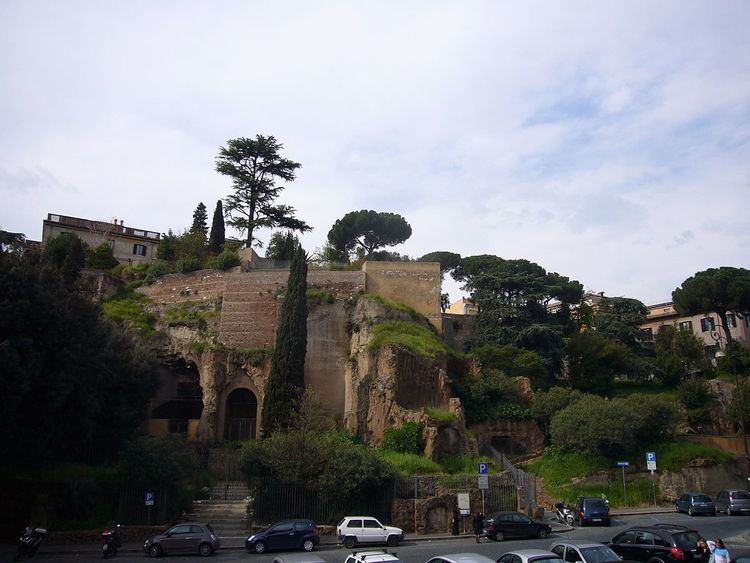 | ||
Address Piazza della Consolazione, 00186 Roma, Italy Similar Campido, Roman Forum, Colosseum, Repubblica, Palatino | ||
When in rome tarpeian rock
The Tarpeian Rock (/tɑːrˈpiːən/; Latin: Rupes Tarpeia or Saxum Tarpeium; Italian: Rupe Tarpea) is a steep cliff of the southern summit of the Capitoline Hill, overlooking the Roman Forum in Ancient Rome. It was used during the Roman Republic as an execution site. Murderers, traitors, perjurors, and larcenous slaves, if convicted by the quaestores parricidii, were flung from the cliff to their deaths. The cliff was about 25 meters (80 ft) high. There seems to be a belief that the disabled and mentally ill were similarly executed, but there are no reliable sources for that.
Contents
Protomartyr tarpeian rock
History
According to early Roman histories, when the Sabine ruler Titus Tatius attacked Rome after the Rape of the Sabines (8th century BC), the Vestal Virgin Tarpeia, daughter of Spurius Tarpeius, governor of the citadel on the Capitoline Hill, betrayed the Romans by opening the city gates for Titus Tatius in return for "what the Sabines bore on their arms" (golden bracelets and bejeweled rings). In Book 1 of Livy’s Ab Urbe Condita, the Sabines "having been accepted into the citadel, [the Sabines] killed her, having been overwhelmed by weapons, and "scuta congesta", meaning, "[they] heaped up shields [on her]". The Sabines crushed her to death with their shields, and her body was buried in the rock that now bears her name. Regardless of whether or not Tarpeia was buried in the rock itself, it is significant that the rock was named for her deceit.
About 500 BC, Lucius Tarquinius Superbus, the seventh legendary king of Rome, levelled the top of the rock, removing the shrines built by the Sabines, and built the Temple of Jupiter Capitolinus on the intermontium — the area between the two summits of the hill. The rock itself survived this remodelling, being used for executions well into Sulla's time (early 1st century BC). However the execution of Simon bar Giora was as late as the time of Vespasian.
There is a Latin phrase Arx tarpeia Capitoli proxima (“the Tarpeian Rock is close to the Capitol”) which some have interpreted to mean that "one's fall from grace can come swiftly".
To be hurled off the Tarpeian Rock was, from a certain perspective, a fate worse than mere death, because it carried with it the stigma of shame. The standard method of execution in ancient Rome was by strangulation in the Tullianum. The rock was reserved for the most notorious traitors, and as a place of unofficial, extra-legal executions such as the near-execution of then-Senator Gaius Marcius Coriolanus by a mob whipped into frenzy by a tribune of the plebs.
Notable victims
Victims of this punishment included:
